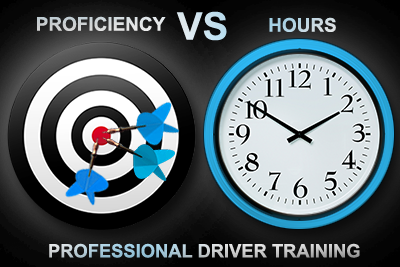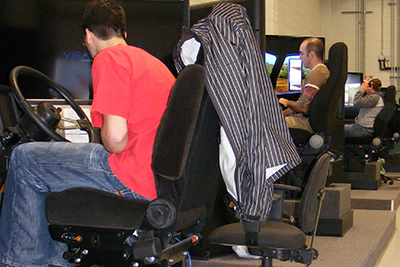Proficiency-based vs. Minimum Hours CDL Training
Lets begin with what everyone knows and then try to ask the right questions. For example, everyone knows that asking the right questions is the best bet for getting the right answers. Everyone also knows that many, many hours of behind the wheel (BTW) experience are needed for a truck driver to become competent. But what exactly does “competent” mean and how do you measure it? The question is pertinent because new Federal Motor Carrier Safety Administration (FMSCA) rules recommend proficiency-based vs. minimum hours commercial driver license (CDL) training requirements. What is the minimum number of BTW hours? A recent survey found that 78% of owner operators believe 30 or more BTW hours should be mandated for CDL candidates. However, the FMCSA excluded the BTW minimum in its recent recommendation because it could not find any scientific evidence of a clear correlation between hours of training and crash rates during a driver’s career. The FMSCA, like everyone else, knows that many hours of training are needed but they focused their recommendation on measuring the outcome of the training. They are requiring that CDL candidates demonstrate high standards of proficiency. What exactly does proficiency mean? How is it different from competence? How do you measure it? And how does this requirement practically improve training standards?
Many of the answers to the above questions may be found in a quick comparison of novice driver training and licensing in North America and in the UK. The comparison will look at: (1) whether a minimum number of BTW hours is mandatory; (2) how many BTW hours learners take, and; (3) the first time pass rates on the government driver’s permit road tests. In North America, novice drivers may be required to take a minimum of six BTW hours and their first time pass rates on road tests designed to measure minimal levels of competence varies between 70% and 90%. In the UK, there are requirement to take a minimum number of BTW training hours, novice drivers voluntarily take between 12 and 30 hours of training and the first time pass rates on road tests hovers around 50%. One might argue that the UK road test requires drivers to demonstrate their proficiency, not merely their competence. The focus on proficiency raises everyone’s expectations. When everyone knows that the expected skill standards will be higher, then everyone who wants to pass the test invests more time and effort to attain those higher standards.
What role can driving simulation play in making it easier to achieve proficiency? The development of quantifiable training courses with objective performance assessment began after World War I and culminated in the first Flight Simulator in 1929. Today’s driving simulators allow tremendous control over driver training and performance measures. Over the past decade, Virage Simulation has collaborated with truck driver training experts and independent researchers to develop and validate its GoldenTM programs, a series of Proficiency-based-Practice (PbP) truck simulator-based driver training scenarios. The Golden ShifterTM targets gear changes in non-synchronized transmissions, the Golden MirrorTM focuses on backing manoeuvers and the Golden SteeringTM is for turns. These PbP programs are ideal for adult learners to progressively acquire and practice driving skills at their own pace with continuous objective feedback. Several independent studies have demonstrated that driving skills are acquired up to two and half times faster in the truck simulator without an instructor than in the truck with an instructor. Several truck schools from the National Association of Publicly Funded Truck Driving Schools use the VS600M Truck Simulator .
The new ruling by the FMSCA creates a great opportunity to significantly improve truck driver training by encouraging us to ask and answer the rights. What do competence and proficiency mean and how are they measured? Usually, a driving test of competence measures performance on a driving task at least once, but not consistently. Tests of proficiency, by contrast, require a novice driver to consistently perform a driving task over several consecutive trials at or above the benchmark level that can be established in a number of ways, e.g. error rates, group norms etc. By focusing on proficiency, the FMSCA has announced that the expected level of skills to be demonstrated will be higher than before. Measuring proficiency is facilitated with driving simulators that can progressively increase task difficulty and monitor and record progress. When everyone knows that more will be expected of them, everyone invests more time and effort to succeed. It is very likely that the proper application of proficiency standards to truck driver training will increase the number of hours drivers voluntarily spend BTW and on truck simulators.









